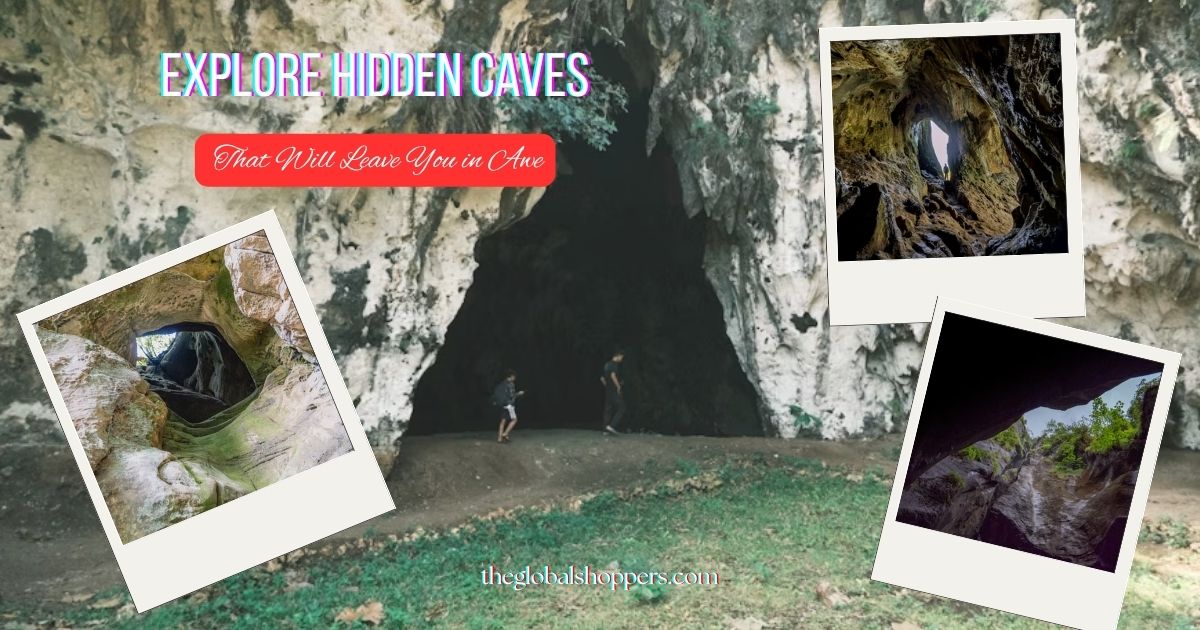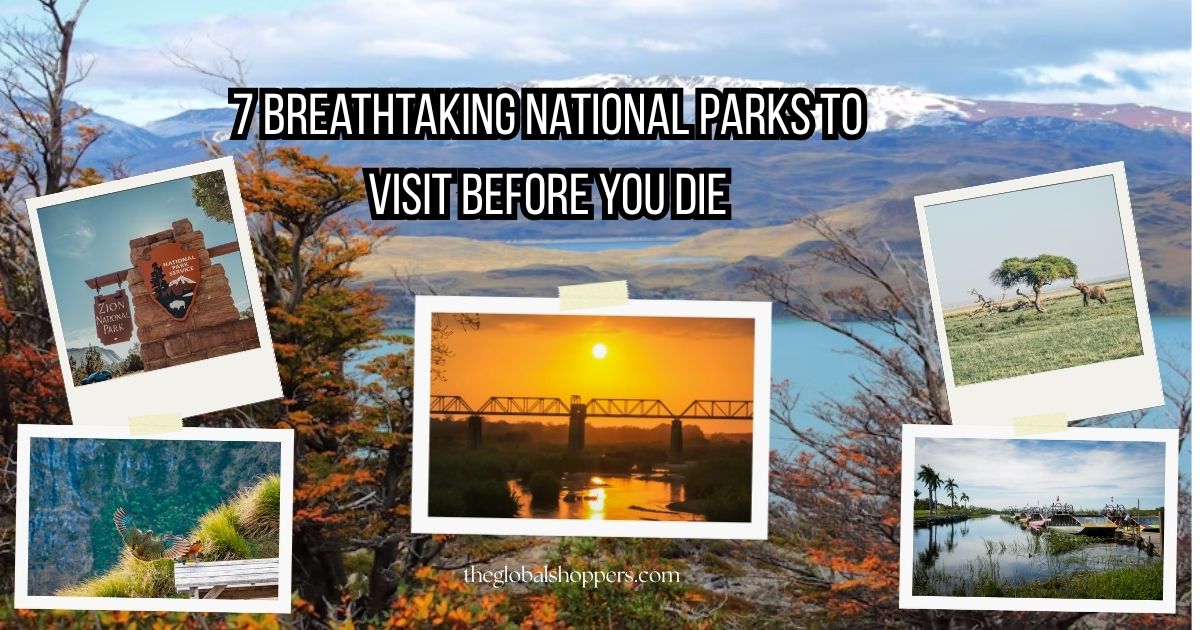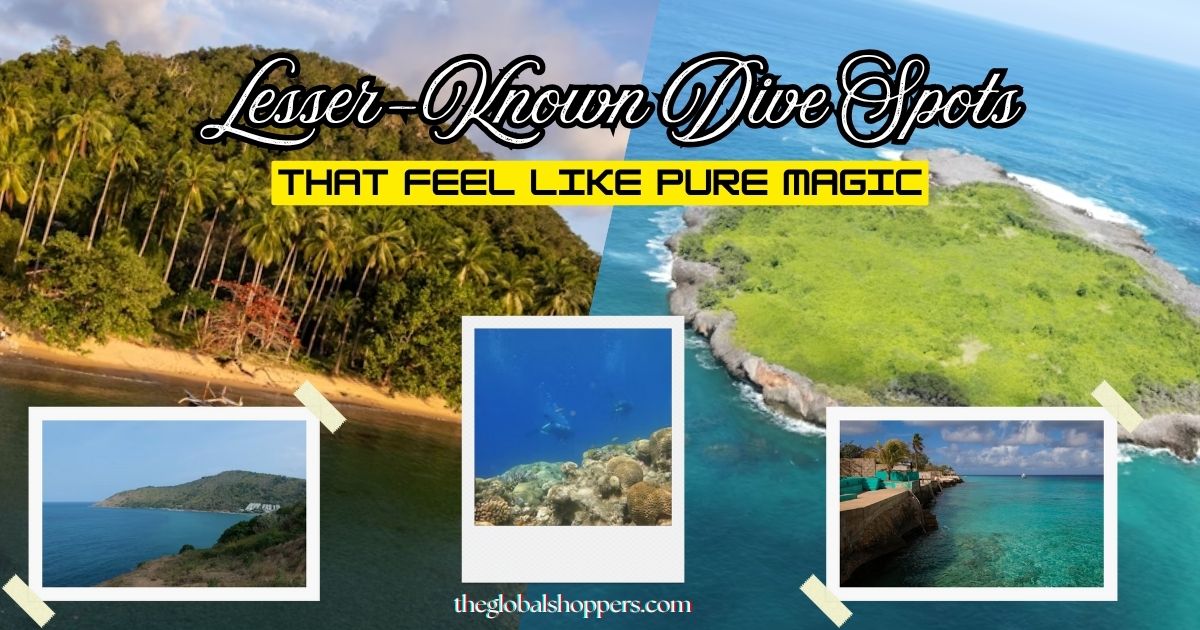The surface of the Earth is filled with wonders: towering mountains, rushing rivers, and endless coastlines, but beneath it lies another world entirely. Hidden Caves and ancient caverns stretch deep below our feet, carved over millions of years by water, time, and the Earth’s restless energy. These subterranean marvels hold secrets of geology, history, and even traces of early human life. From glittering crystal chambers to ancient underground rivers, these Hidden Caves offer an adventure unlike any other, where light, silence, and mystery blend into something almost magical.
Whether you’re an adrenaline seeker eager to crawl through narrow tunnels or a curious traveler looking for a safe, guided tour through nature’s underground artistry, the world’s Hidden Caves promise awe-inspiring experiences. This guide explores some of the most breathtaking caves and caverns across the globe, along with fascinating insights, travel tips, and what makes each descent worth the journey into the Earth’s hidden heart.
The Allure of Underground Worlds
Caves have always captivated human imagination. Early civilizations used them as shelters, temples, and even gateways to the spiritual world. In mythology, caves often symbolize mystery and transformation—a place where explorers venture into the unknown and return changed. Today, they remain one of nature’s most mesmerizing creations, offering a glimpse into the planet’s hidden workings.
What makes caves so fascinating is their diversity. Some sparkle with mineral formations that look like frozen waterfalls, while others echo with underground rivers or glow with bioluminescent life. Exploring them allows travelers to witness geology in motion, to see the artistry of water and stone shaped over thousands or even millions of years.
How Caves and Caverns Form
Caves are created when natural forces like water, volcanic activity, or tectonic movement carve voids in the Earth’s crust. The most common type, limestone caves, form when slightly acidic rainwater seeps through soil and dissolves the rock below. Over time, the cavities grow into tunnels, chambers, and complex cave systems.
Inside, water dripping from ceilings or running along walls continues to sculpt breathtaking formations. Stalactites hang like icicles, while stalagmites rise from the ground like pillars. When these two meet, they form majestic columns. Other features, like flowstones and soda straws, create mesmerizing textures that seem almost alive.
Volcanic caves, on the other hand, are formed by flowing lava. When the outer layer of molten rock hardens while the inner flow continues, it creates hollow tunnels known as lava tubes. Some of these can stretch for miles, forming surreal, glowing passageways beneath old lava fields.
The World’s Most Hidden Caves and Caverns
Waitomo Glowworm Caves, New Zealand
Few places in the world feel as magical as the Waitomo Glowworm Caves on New Zealand’s North Island. Here, thousands of tiny glowworms light up the ceilings like a natural planetarium. Visitors can take a boat ride along the underground river, drifting silently under a sky of bioluminescent blue lights. The experience is both tranquil and otherworldly, as if floating through a galaxy beneath the Earth.
Mammoth Cave, Kentucky, USA
The name says it all. Mammoth Cave is the world’s longest cave system, stretching over 400 miles of mapped passageways. Located in Kentucky, this UNESCO World Heritage Site offers tours for all levels—from easy walks through vast chambers to challenging spelunking routes that crawl through narrow tunnels. The Cave’s history is just as fascinating as its geology, with evidence of prehistoric human exploration and stories from the early 1800s when it was mined for saltpeter used in gunpowder.
Škocjan Caves, Slovenia
If there were ever a cave that looked straight out of a fantasy novel, it would be the Škocjan Caves. Designated a UNESCO World Heritage Site, this Slovenian wonder features massive underground canyons, gushing rivers, and dramatic stone bridges. The Murmuring River, which disappears into the depths of the Earth, adds a sense of adventure and mystery. Walking across the narrow bridge suspended above a roaring chasm is an experience you’ll never forget.
Carlsbad Caverns, New Mexico, USA
Carlsbad Caverns National Park in the Chihuahuan Desert is home to over 100 caves, including some of the largest chambers in North America. The Big Room, the park’s most famous chamber, is so vast that it could fit six football fields. Visitors can take the elevator 750 feet down or hike through the Natural Entrance Trail for a more immersive journey. Each year, thousands gather at dusk to watch a spectacular event: hundreds of thousands of bats spiraling out of the Cave for their nightly flight.
Postojna Cave, Slovenia
Another Slovenian marvel, Postojna Cave, is one of Europe’s most visited underground attractions. What sets it apart is its underground train, which takes visitors through over 15 miles of tunnels filled with stunning stalactites and stalagmites. The Cave’s grand halls and narrow corridors are beautifully illuminated, highlighting the shimmering rock formations. Postojna is also home to the “baby dragon,” a rare, blind salamander called the olm that has adapted to the darkness over centuries.
Puerto Princesa Underground River, Philippines
Located on Palawan Island, this UNESCO-listed site is one of the world’s longest navigable underground rivers. Stretching over five miles, it winds through impressive limestone formations before flowing directly into the sea. Visitors can explore the first section by boat, marveling at cathedral-like chambers and dramatic rock patterns. The area surrounding the river is lush with tropical wildlife, making it a perfect mix of underground wonder and natural beauty.
Fingal’s Cave, Scotland
Fingal’s Cave on the uninhabited island of Staffa is unlike any other. Its walls are made of hexagonal basalt columns formed by ancient lava flows, creating a geometric masterpiece of nature. The Cave’s acoustics inspired composers like Felix Mendelssohn, who wrote the famous “Hebrides Overture” after visiting the area. Reaching Fingal’s Cave requires a boat trip, but the journey through Scotland’s wild coastline is part of the charm.
Jeita Grotto, Lebanon
Just outside Beirut lies one of the Middle East’s greatest natural treasures: the Jeita Grotto. This stunning cave system consists of two separate caverns, the upper and lower grotto, both filled with incredible rock formations. Visitors can take a boat ride through the lower section’s underground river and walk the upper galleries to admire some of the world’s most intricate stalactites. Jeita Grotto has become a symbol of Lebanese pride, often used to represent the country’s natural beauty.
Reed Flute Cave, China
Located near Guilin, the Reed Flute Cave has been a tourist attraction for more than 1,200 years. Its name comes from the reeds that grow outside, which were once used to make flutes. Inside, vibrant lighting enhances the beauty of its limestone formations, creating a visual spectacle. Ancient inscriptions dating back to the Tang Dynasty adorn the walls, showing that this Cave has fascinated people for centuries.
Exploring Lava Tubes: A Different Kind of Cave
Not all caves are carved by water. Lava tubes, formed during volcanic eruptions, offer a completely different underground experience. In Hawaii, the Thurston Lava Tube inside Hawaii Volcanoes National Park lets visitors walk through a tunnel once filled with molten lava. The walls are smooth and rounded, a stark contrast to the jagged limestone formations of typical caves.
In Iceland, the Raufarhólshellir Lava Tunnel offers guided tours through a vibrant maze of reds, oranges, and purples caused by mineral deposits in the volcanic rock. During winter, icicles hang from the ceiling, adding a surreal touch to the experience. These caves reveal the fiery origins of the planet, frozen in time beneath the surface.
Tips for Exploring Caves Safely
Exploring caves can be thrilling, but it also requires preparation and awareness. Here are some essential tips for a safe and enjoyable underground adventure:
Choose guided tours.
If you’re new to caving, always start with a guided tour. Professional guides know the safest routes and can explain the geology and history of the area.
Wear appropriate clothing.
Caves tend to be cool and damp, even in tropical regions. Wear layers, closed-toe shoes with good traction, and bring a light jacket.
Bring the right gear.
A headlamp or flashlight is essential, along with spare batteries. Gloves, knee pads, and helmets are often provided on advanced tours, but check ahead.
Respect the environment.
Caves are delicate ecosystems. Avoid touching formations, as oils from your skin can stop mineral growth. Do not litter or disturb wildlife such as bats or salamanders.
Stay aware of conditions.
In some regions, heavy rainfall can cause flooding in cave systems. Always check local weather and safety advisories before visiting.
The Cultural and Scientific Value of Caves
Beyond their natural beauty, caves hold immense cultural and scientific significance. Many have served as ancient shelters and spiritual sites. The Lascaux Caves in France, for example, contain prehistoric paintings estimated to be over 17,000 years old, offering insight into early human creativity.
Caves also provide valuable information about climate change. Stalactites and stalagmites contain mineral layers that record shifts in temperature and rainfall over thousands of years. Scientists study these formations to understand Earth’s past environments better.
In addition, cave ecosystems often harbor unique species found nowhere else on Earth. Blind fish, translucent shrimp, and rare amphibians thrive in the darkness, adapted to life without sunlight. Protecting these habitats is vital to preserving biodiversity and advancing biological research.
Best Caves for Families and Beginners
Not every cave adventure requires rappelling down cliffs or crawling through tight spaces. Many destinations offer easy, family-friendly tours that still deliver that sense of wonder.
- Luray Caverns, Virginia, USA: Known for its cathedral-like rooms and musical stalactite organ that produces tones when struck.
- Jenolan Caves, Australia: Offers illuminated pathways and themed tours, including ghost walks and children’s programs.
- Arta Caves, Mallorca, Spain: A dramatic coastal cave with easy access and stunning ocean views right at the entrance.
- Grutas de Cacahuamilpa, Mexico: One of the largest cave systems in the world, with vast chambers and colorful lighting that highlights the rock formations.
These sites make caving accessible to everyone, turning a potentially daunting activity into a family adventure filled with learning and discovery.
The Future of Cave Tourism
As more travelers seek sustainable and immersive experiences, cave tourism continues to grow. Many sites have introduced eco-friendly measures, including controlled lighting to reduce algae growth, limiting visitor numbers, and educational programs that promote conservation. Virtual reality technology also allows visitors to experience fragile caves without causing harm to sensitive environments.
Scientists and local communities work together to balance tourism with preservation. After all, these delicate ecosystems take millions of years to form and can be damaged in seconds. Responsible travel ensures that future generations can continue to marvel at these underground wonders.
The Hidden Beauty of the Underground World
Exploring caves and caverns is more than just an adventure—it’s an invitation to see the world from a completely different perspective. Beneath the surface lies a landscape carved by nature’s quiet persistence, filled with beauty, mystery, and stories older than civilization itself. Whether you are floating beneath glowworms in New Zealand, hiking through Kentucky’s endless tunnels, or listening to the echo of dripping water in Slovenia, you are witnessing the Earth’s slow, steady artistry.
Cave exploration teaches patience and respect for nature’s power. It reminds us that the most incredible places often hide in silence, waiting to be discovered by those willing to venture into the dark. So the next time you plan your travels, consider going beneath the surface—the world below is every bit as breathtaking as the one above.









